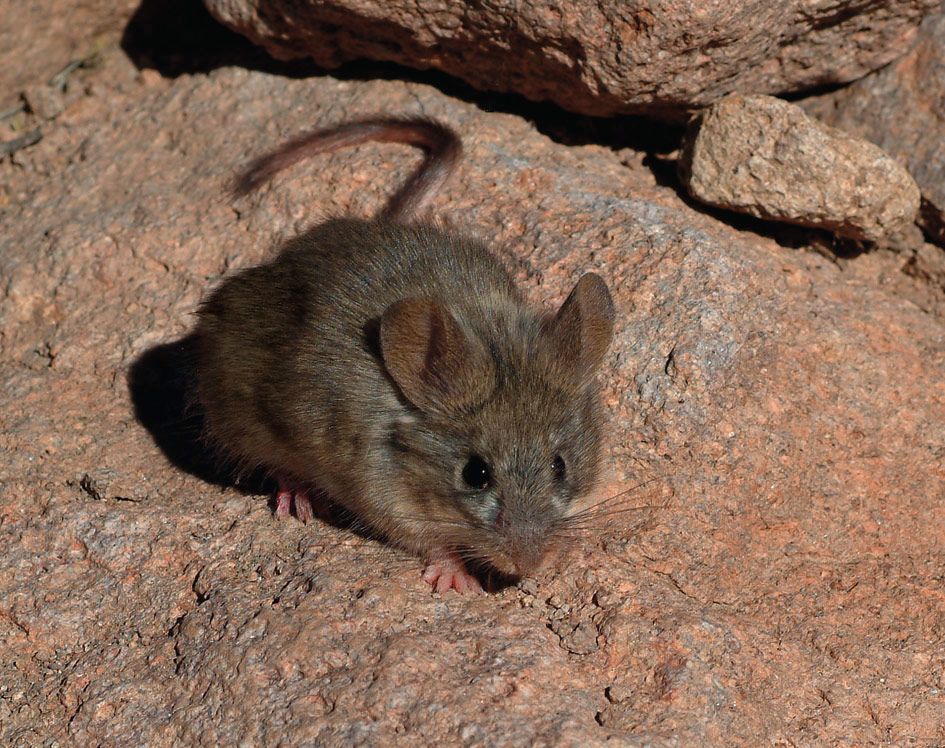Yellow-rumped leaf-eared mouse
(Phyllotis xanthopygus)

Description
The yellow-rumped leaf-eared mouse (Phyllotis xanthopygus) otherwise known as the Patagonian leaf-eared mouse is a species of rodent in the family Cricetidae and order Rodentia. It is the most widespread member of the genus. Phyllotis xanthopygus is a predominantly greyish brown/sand-colored New World mouse that reaches around 55g in its adulthood. Its thick coat is typically lighter on its underside, most prominent posteriorly, exhibiting countershading that is typical for many small mammals as it aids in camouflage from predators. True to its name, the Patagonian leaf-eared mouse has broad triangular ears similar to other leaf-eared members that compose the genus Phyllotis. The pelage of Phyllotis xanthopygus is known to differ seasonally. This example of phenotypic plasticity contributes to its ability to camouflage in a dynamic, seasonal, environment. Blending in with the vegetation and rocky outcrops is an important characteristic as their primary predators are raptors most notably owls, which rely on being able to spot their prey from the air. While not explicitly nocturnal, they are most active at night due to the correlation between light intensity, visibility, and predation risk. The adults of P. xanthopygus are quite large as far as the genus goes with a body mass of fifty-five grams and large ears that are normally around twenty-seven millimeters long. The throat and chin are a pale buff or a light tan with dull grey underfur. These mice boast a long soft fur with yellow brown guard hairs that are sometimes black tipped with grey bases. Phyllotis xanthopygus occurs in South America, specifically in the Andes mountain range in Peru, Argentina, Chile, and Bolivia from sea level to 5,000 m. While the rocky habitat of the Andes provides ample cover from predators, the high elevation environments are limited in food availability therefore restricting reproduction to the warmer months. The highest elevation the yellow-rumped leaf-eared mouse ever was found was at the summit of Volcán Llullaillaco (6739 m) and this is the highest altitude a mammal was ever found in nature. Its distribution at high altitudes across the Andean plateau has led to plasticity in its non-shivering thermogenosis in order to cope with the low temperatures. This thermal acclimation relies on brown adipose tissue and is often induced by ingestion.
Taxonomic tree:







